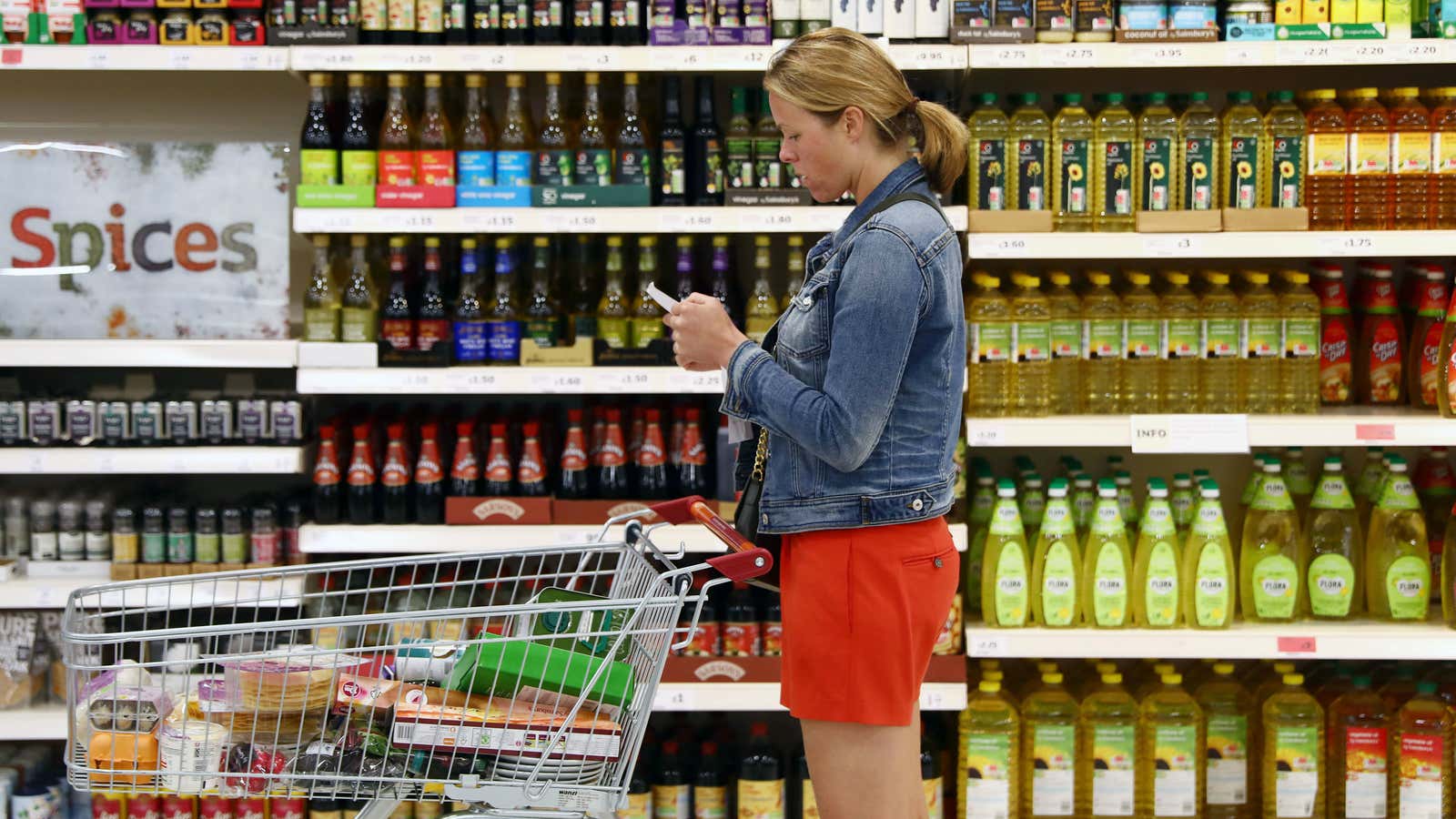Brexit hasn’t come to pass yet—in fact, negotiations on the divorce between the UK and EU haven’t even begun—but the economic cost of the vote is quickly catching up with the British public.
In June 2016, when the UK voted to leave the EU, the annual inflation rate on food and non-alcoholic beverages was -2.9%. Almost a year later, the latest data for May from the Office for National Statistics shows that rate has surged to 2.1%, the highest since November 2013.
Food inflation is rising quickly. At the beginning of the year, the rate was still negative and had been for almost three years after new discount supermarkets put pressure on big chain stores and sparked a nationwide supermarket price war. Those days are over. The pound’s 15% slide since the EU referendum has pushed up import prices; some stores have responded by removing well-known brands like Sol beer from the shelves and warned that prices on other products would rise.
This is the latest sign of the “challenging time” UK households are set to face as a result of Brexit, warned of by the central bank. It also shows the disproportionate effect Brexit is having on the population. Last year, lower income households spent 17% of their total expenditure on food and non-alcoholic drinks, compared to 8% for households with the highest income. So poorer families will feel the force of this inflation more.
Meanwhile, there are more billionaires in the UK than ever before and they are getting richer as the weaker currency propelled the UK stock market to record highs and increased earnings on any overseas investments. The latest inflation data adds insult to injury for the new UK government who are faced with negotiating Brexit from an unstable position while the economy around them gets weaker and the public feels poorer.
